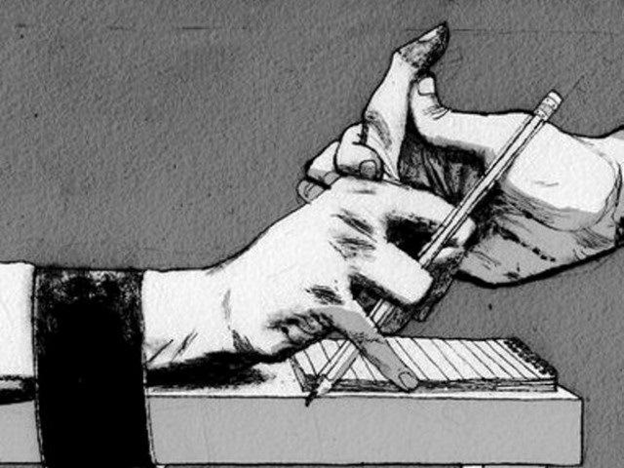Baloch Journalists Protest Against Attacks on the Media
Journalists under attack in Pakistan
NEW DELHI: Journalists in Pakistan’s troubled Balochistan district boycotted coverage of the province’s assembly proceedings, in protest of the killing of three media workers -- senior journalist Irshad Mastoi, reporter Mohammed Rasul Khajak and accountant Mohammed Younus -- by unknown gunmen in Quetta.
Raising slogans against the government for failing to protect the people of Balochistan, Vice President of Pakistan Federal Union of Journalists Saleem Shahid (as quoted in the Express Tribune), said “At least 43 journalists have been killed in the line of duty in Balochistan during the past six to seven years.” “The government does not have any writ in Balochistan,” Shahid added.
Although Pakistan has come to acquire a notoriously bad reputation for the lack of safety provided to media personnel, Balochistan in particular, is a province many journalists fear, working under threat from terrorist groups, nationalist outfits, criminal gangs, punitive security forces and a government that is virtually absent.
Baloch parties, that began by articulating their discontent not in the demand for independence but within the legal framework of the constitution to demand more autonomy and rights, have, over the years, in large part because of the repressive tactics adopted by the State, gotten more radicalised. The irony lies in the fact that the measures adopted by the Pakistani state are reinforcing the threat of ethnic nationalism whilst seeking to eliminate these separatist elements.
In addition to nationalist groups such as the Baloch Liberation Army (BLA), the Baloch National Movement, the National Party, the Balochistan National Party, and the Baloch Student Organisation, there has been an increase in sectarian groups in a province traditionally known for its secularism. Afghan and Pakistani Taliban (Tehrik-e-Taliban Balochistan), al-Qaeda, Lashkar-e-Janghvi, Sipah-e-Sahaba Pakistan, Imamia Student Organization, and Sipah-e-Muhammad have reportedly established their presence in the province.
Analysts ascertain that the Sipah-e-Sahaba and Lashkar-e-Janghvi possibly enjoy official protection, as they continue to hold major rallies publicly in the face of a ban. There has been an expansion of operational spaces for violent sectarian groups to function within, in Pakistan nationally, and in Balochistan specifically, as the government’s capacity and perhaps even willingness to investigate, prosecute and convict those involved in violent attacks is compromised.
This lacking government capacity was the focus of a October 2013 report by the Human Rights Commission of Pakistan (HRCP), which stated that the provincial government is “nowhere to be seen.” In fact, the government’s repressive tactics in Balochistan may be the single most contributing factor to increasing militarisation and sectarianism in the province. The “kill and dump” operations, which were designed to reinforce the power of the state, have led to widespread anger and discontent targeted at the government for abductions and killings. The exact numbers are difficult to tally, but Baloch nationalists assert that there have been “thousands” of such cases.
The International Voice for Baloch Missing Persons says 18,000 people from the region are unaccounted for, of which approximately 2000 were killed between 2001 and 2013. There are vast discrepancies in the official numbers. In 2008, Interior Minister Rehman Malik placed the figure at 1100. However, in 2011, Balochistan Home Minister Zafrullah Zehri claimed that only 55 people were missing.
While there is contention on the numbers, there is an emerging consensus, amongst organizations including the Human Rights Watch and the HRCP, that most of these disappearances have been perpetuated by government institutions, specifically the intelligence agencies and Frontier Corps, often in conjunction with the local police.
Journalists in Balochistan have to work within this context -- which neither the government nor the militant/nationalist groups make any easier. This was made worse by a court order in 2011 that banned media coverage of illegal groups. In the absence of any government protection, militant and nationalist groups began threatening local media personnel, demanding coverage in violation of the court order.





